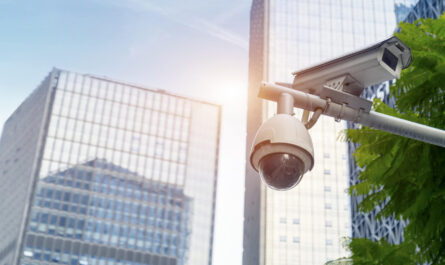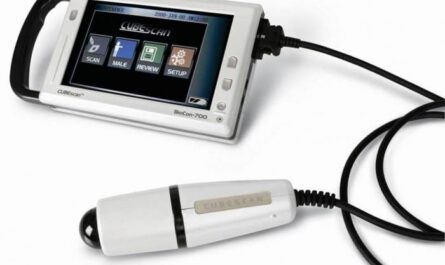
Connecting Our World
The Internet of Things, commonly referred to as IoT, encompasses connected devices that transmit and receive data over networks without human interaction. From smart home devices to industrial systems and healthcare technologies, objects in our daily lives are being embedded with sensors, software, and connectivity so they can exchange information with manufacturers, operators, and other connected devices. This surge of interconnected “things” promises to revolutionize how we live, work, and interact with our environment.
Smart Homes Take Convenience to New Levels
Within the smart home space, IoT adoption is booming. Devices like smart lighting, thermostats, locks, security cameras, and kitchen appliances can now be controlled remotely via mobile apps or digital assistants. Homeowners gain unprecedented control over their living spaces without having to be physically present. Thermostats can be adjusted from anywhere, lights and doors lock automatically on a schedule, and security cameras provide around-the-clock monitoring even when away. Consumers crave the convenience of being able to manage their homes from a distance using connected devices. As prices fall and compatible options widen, smart home technology continues its march into mainstream households.
Cities Are Becoming “Smarter”
Cities worldwide are embracing IoT to enhance infrastructure and services. Streetlights, traffic lights, parking meters, security cameras, waste management systems and more are getting connected sensors and integrated into centralized management platforms. This enables municipalities to collect valuable real-time data, gain operational insights, and optimize resource allocation. For example, smart streetlights that detect pedestrian traffic can automatically adjust lighting levels as needed for safety and energy efficiency. Traffic analytics help officials reduce congestion. Notifications when public garbage bins are full streamline waste removal. As cities digitally transform using IoT, residents enjoy improved governance while municipal operations grow more cost-effective.
Healthcare Advances with Remote Care
Within healthcare, IoT is revolutionizing patient care and medical research. Connected devices monitor vital signs, track therapies, and screen for health issues from afar. This empowers providers to remotely monitor chronic conditions, coordinate follow-ups more seamlessly, and quickly intervene in emergencies. Wearables like smartwatches detect falls in seniors and flag abnormal heart rhythms. Implanted sensors provide round-the-clock glucose level tracking for diabetics. At home, IoT solutions help caregivers support family members from a distance. In clinical settings, medical IoT devices streamline workflows, automate tasks, boost efficiency, and support large-scale data collection efforts aiding new drug development and disease research. Connected healthcare helps patients remain independent for longer while lowering overall costs.
Wearables Become Mainstream Wellness Companions
The emergence of popular consumer-focused wearables like smartwatches and fitness trackers has helped mainstream IoT adoption among individuals focused on wellness and lifestyle. These connected devices track steps, monitor workouts, measure heart rate and sleep patterns, and integrate with health and fitness apps. With their ability to collect rich personal data over long periods, wearables offer profound insights into an individual’s daily activities, behaviors and biometrics spurring new types of health, wellness and insurance applications. Many users have come to rely on wearables not just to count calories but also receive alerts, conveniently respond to messages or check schedules and notifications on the go. As these devices add more advanced sensors and capabilities, they will likely evolve into even closer personal health assistants integrated into our daily routines.
Industry Advances through Automation and Analytics
Beyond consumer and municipal applications, industrial IoT sees the widest deployments with billions of interconnected machines, sensors and systems optimizing factories, infrastructure and supply chains globally. Predicated on automation and data analysis, industrial IoT dramatically improves processes across sectors like manufacturing, energy, transportation and resources. Factories integrate sensors into equipment, tools, workstations, inventory and more to gain a unified real-time view of operations. Analytics diagnose issues, forecast maintenance needs, boost output and quality. In energy, smart grids supported by IoT optimize fuel usage, detect faults, improve power distribution and enable greater reliance on renewable sources. Connected sensors streamline logistics from source to consumer by bringing real-time visibility into transportation and storage facilities. As industrial IoT scales further, it will continually transform how physical goods and services are produced worldwide.
New IoT Standards Ensure Interoperability
One important factor enabling the rapid expansion of IoT devices is standardization which facilitates communication between diverse connected devices and platforms. Groups like the Industrial Internet Consortium, Wi-Fi Alliance, Thread Group, and Bluetooth SIG develop protocols and frameworks to provide consistent connectivity and interoperability. Emerging standards like 5G cellular networks, IPv6 networking protocols, and low-power wide-area network specifications are pushing IoT technology into new domains. Common programming languages help app and software developers efficiently build solutions compatible across an array of endpoints. As standardization progresses, the IoT ecosystem will become more cohesive, scalable and able to interconnect a virtually limitless number of “smart things”. This paves the way for endless new cross-platform innovations and applications integrating IoT into every facet of our digitally-driven lives.
*Note:
- Source: Coherent Market Insights, Public sources, Desk research
- We have leveraged AI tools to mine information and compile it



